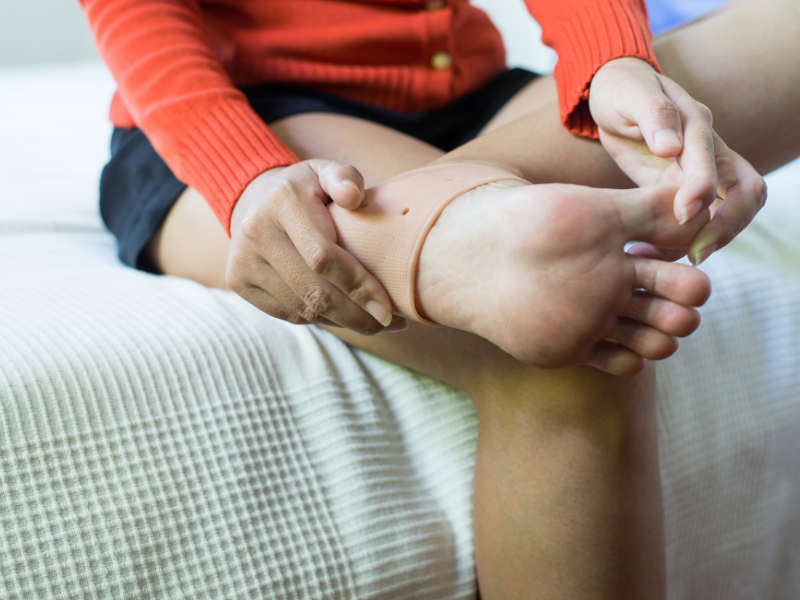Plantar Fasciitis: What You Can Do
Nothing can ruin a beautiful morning more than the pain at the bottom of the foot -- the classic symptom of plantar fasciitis. At its core, plantar fasciitis is an inflammatory and degenerative condition of the plantar fascia — a thick band of connective tissue that connects the heel to the front of the foot.
The plantar fascia supports the arch of your foot in weight-bearing and shock absorption. However, excessive use of the foot speeds up its degeneration and causes inflammation — making it difficult for the fascia to bear weight.
Plantar fasciitis is an extremely common condition, affecting nearly ten percent of the US population at some point in their lives (1). While anyone can get plantar fasciitis, it is more common in the age group between 40 to 70 years.
Besides Pain In The Morning, There Might Be Other Symptoms
While morning pain is a classic symptom, you should look for the following to recognize plantar fasciitis:
- Stabbing pain in the heel or foot bottom
- Pain that flares up after rest (i.e., morning or sitting for a while)
- Pain in the arch of the foot
- Pain that increases with exercise
- Heel swelling
- Reduced range of foot motion
Symptoms can last as long as two years or even more without treatment. However, proper management can resolve plantar fasciitis in as little as three months (2) (3).
Excessive Use And Prolonged Pressure On The Foot Cause Plantar Fasciitis
Plantar fasciitis is common among runners and athletes in high-impact sports (4). It also affects people with the most standing-heavy jobs, such as security guards, waiters, welders, and electricians. In addition, pregnancy, obesity, and having flat or high arched feet also increase your risk for plantar fasciitis (5). For example, a BMI (body mass index) of more than 30 increases the risk for plantar fasciitis by six times (6). A person with a BMI over 25 is considered overweight.
Physical Therapy Can Help You Walk Normally Again
Physical therapy is the backbone of treating plantar fasciitis and includes stretching and strengthening exercises (7)(8). In addition, night splints prevent your plantar fascia from relaxing and healing in a relaxed position (often the cause of flare-ups in the morning or after sitting for a while) (9).
To add more, insoles or shoe inserts are very helpful. Insoles offer firm, medical-grade support to your foot’s arch, help distribute the weight and take pressure off your plantar fascia. Among other home remedies, you should consider insoles, especially if your shoes do not have good arch support.
Research suggests orthoses, including supportive shoes and insoles, reduce pain and inflammation and improve function both in the short and long term (10) (11) (12). You can get prefabricated insoles online or at your nearest store, or have them custom-made based on your foot impression, lifestyle information, and other needs.
Furthermore, if you are obese, losing weight is crucial. Interestingly, bariatric surgery to lose weight has a more than 90 percent success rate of curing plantar fasciitis (13). In the end, when you experience a flare-up, you should sit down and take some rest. You can also apply ice to the bottom of the foot and take over-the-counter pain medications (NSAIDs).
Consult your doctor if your condition does not improve with home remedies.


Share:
Custom Orthotics better than Generic?
Morton’s Neuroma: What Is It, Symptoms and Treatment